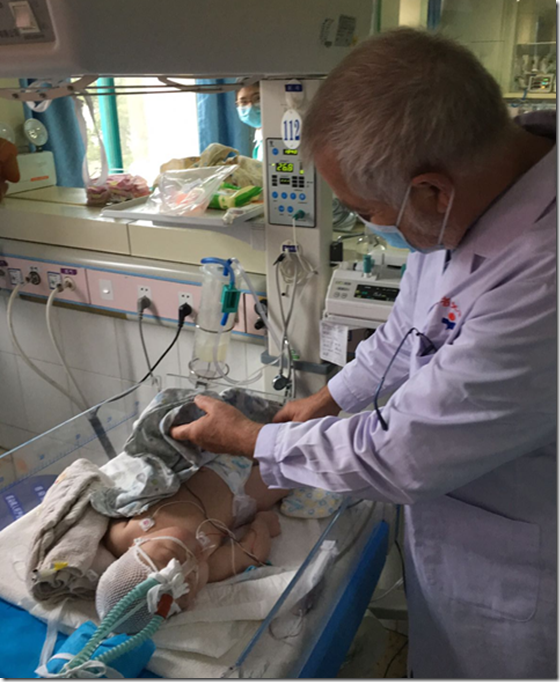The FAST 2 (Fourier-transform Infrared Spectroscopy guided Surfactant Therapy) trial begins in 4 Danish University Hospitals to validate performance of innovative point-of-care (POC) device
SIME Diagnostics, a pioneer in point-of-care respiratory diagnostics in the ICU, has launched an investigational pilot (FAST 2 study) of the company’s Clinical AI Platform in Neonatal Intensive Care Units (NICUs) across Denmark.1 The Clinical AI Platform (comprised of a POC device, reagent-free disposable and AI algorithm) will be used to predict neonatal Respiratory Distress Syndrome (RDS) in premature babies at birth.
The technology that drives the Clinical AI Platform was originally validated in a multi-centre clinical trial (FAST) and proven to predict RDS using a prototype lab-based device.2 The study will revalidate this clinical data using a fully automated CE Marked POC device and an improved AI algorithm. Over the next 3 months samples of gastric aspirate (a fluid routinely extracted at birth) from 70 babies will be analysed using the POC device and disposable. The platform’s AI will evaluate the data generated to determine lung surfactant by measuring the ratio of two key lung maturity biomarkers: lecithin–sphingomyelin. The L/S ratio is a well-established predictor of neonatal RDS, with a low ratio indicating a high risk of RDS. The results will remain blinded to the clinicians and will not be used to guide treatment. The real-world data generated will support an upcoming FDA submission and prepare the company for market entry in 2023.
An urgent unmet need: A rapid predictive test for Respiratory Distress Syndrome (RDS)
RDS is most effectively treated within the first hour of life however, prophylactic treatment of premature babies at birth is not recommended as surfactant administration is invasive and risky in small babies. Therefore, RDS is currently treated with ‘early surfactant’ hours after birth (when the fraction of inspired oxygen requirement levels are >30-40%) or with ‘late surfactant’ (when symptoms develop). A recent study comparing both methods concluded that ‘early surfactant’ is associated with reduced time on mechanical ventilation, complications and costs.3 However, ‘early surfactant’ is still only administered when oxygen levels begin to decline (the first sign of disease onset) and therefore is not preventative. RDS Predict will revolutionise neonatology by enabling clinicians to deliver targeted and preventative surfactant treatment within the first hour of life– offering an even higher reduction in mortality, morbidity and costs than ‘early surfactant’.
“In 1989 I developed the current gold standard of care for RDS: the INSURE/LISA method (a combination of surfactant and CPAP).4 But even with these advances in care, RDS has remained the leading cause of mortality and morbidity in premature babies” said world leading neonatologist Professor Henrik Verder. “Now 4 decades later we have the technology to screen babies at birth so that we may deliver early targeted treatment – addressing one of the most urgent unmet needs in neonatology today.”
View full press releaseReferences:
- https://clinicaltrials.gov/ct2/show/NCT05615428?term=christian+heiring&draw=2
- https://onlinelibrary.wiley.com/doi/full/10.1111/apa.13683
- https://www.globenewswire.com/news-release/2022/11/29/2564088/0/en/Chiesi-USA-Announces-Publication-of-Health-Economics-Analysis-of-Selective-Early-Rescue-Surfactant-Administration-vs-Standard-Surfactant-Administration-for-Premature-Infants-with-R.html
- https://www.nejm.org/doi/full/10.1056/nejm199410203311603


